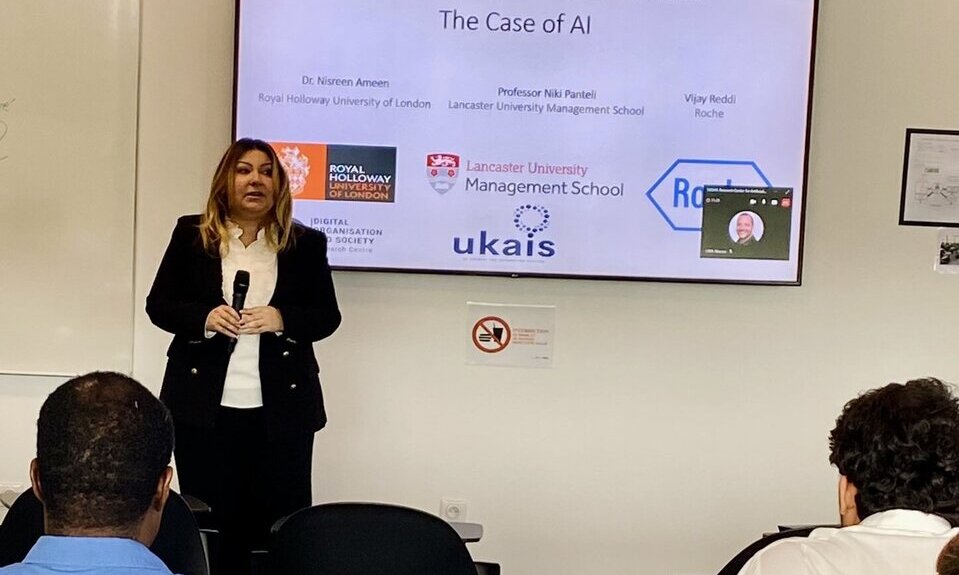All major companies are now asking themselves the question of how to integrate AI into their day-to-day business. But most are struggling to get there. Nisreen Ameen, Senior Lecturer in Digital Marketing & Co-director of the Digital Organisation and Society Research Centre Royal Holloway of the University of London, helps us to understand why…
Most companies seem to be aware that the use of AI is becoming essential for them. But many of them don’t know how to correctly use AI. What’s your suggestion for them?
I think the first step is for managers to educate themselves about how AI can be utilized effectively in their organizations, and that’s not just through social media. It is important to understand what the current generation of AI can and cannot do. The first step is to get the required training in terms of AI from IT professionals to understand what the technology can do and where it can be applied best. But then it’s also important to critically think which aspects of the business AI can be looking after. So, for example, in the context of marketing functions, there are some aspects in the customer journey that AI can look after well and they can be automated.
There are other aspects that may better remain human-based, while there are some aspects which require input from both human and AI. Understanding how the technology works and where it can be successfully implemented; and the best area to implement it is crucial and key for success. It also needs flexibility and flexible mindsets, so being prepared to work with this technology is important. As much as we can be very passionate about AI sometimes, there are still many challenges. Understanding how it functions and how to adapt to the new nature of work is important, I think there is a lot to be learned from there.
How do you explain the fact that the failure rate for AI related projects in companies is so high (between 83% and 92%)?
I think that it links to the earlier point as well, as some companies can be very interested in using AI and it’s really important to implement AI in many cases, but when it comes to understanding how and when AI is best used, that’s a challenge; and understanding the strengths and weaknesses of the technology and the organization is key here. For example, which aspects can AI really help with? This might be unique to the type of business too. It’s more about understanding and educating ourselves in terms of what AI can do. It’s not just about the introduction of AI itself. So as employees start to work with AI, what kind of skills and mindset do they need to have? And that’s a key question here, it’s not always very easy for humans to give up a certain task that they’ve been doing for many years and automate it to AI. Appreciating this is key to avoid the high failure rate that we’ve seen in some recent reports.
You’re mentioning that the mindset and the culture of the companies are very important. According to your observation and experiences, do you observe if there is any certain type of company culture that suits best to the deployment of AI? Is it possible to deploy AI in all companies, all kind of types of cultures including those with top down cultures?
So in terms of culture, I think it’s mainly about adapting to the new world of AI. So, a culture based on flexibility, and two-way communication is important here. We very often see top teams and senior managers very interested in the adoption of a certain technology. Therefore, the company starts adopting it. But I think maybe a shift in culture in terms of a two-way communication and discussions between employees and top managers, even at the very early stages, when the technology is introduced is key, this helps a lot in terms of scaling it further. It’s not just up to the top managers of firms to make key decisions related to AI implementation, but also how it would be successfully implemented because at the end of the day, there is an employee who’s working with AI on a daily basis and it is important to ensure the success of this human-AI interaction.
So, the question here is, how organizations can make this work? How to get tasks done in an effective way? This can be different for different teams and departments, different skillsets and maybe even for employees at different stages of their career. These teams may have different types of interactions with AI that can contribute well to these early discussions.
Read also: How to use Artificial Intelligence to increase business creativity?






